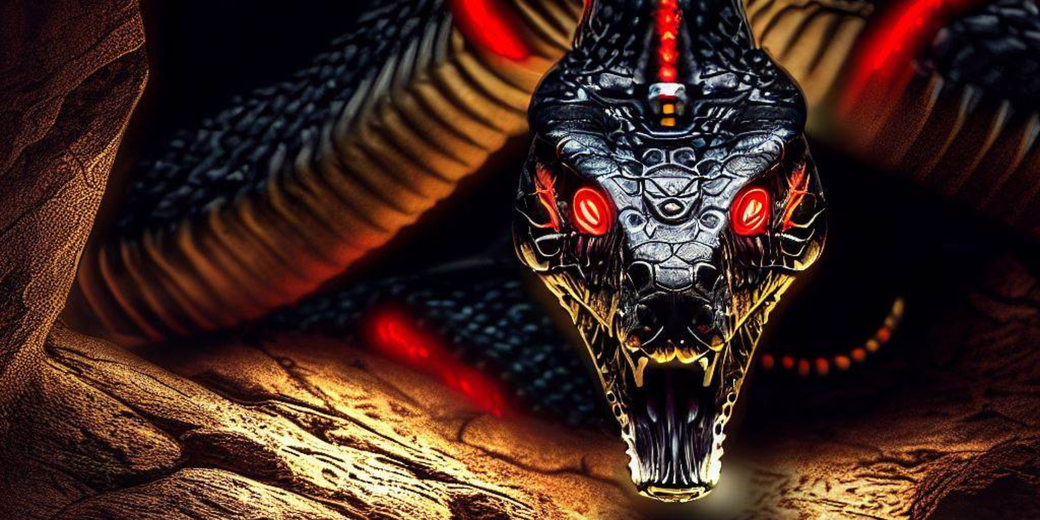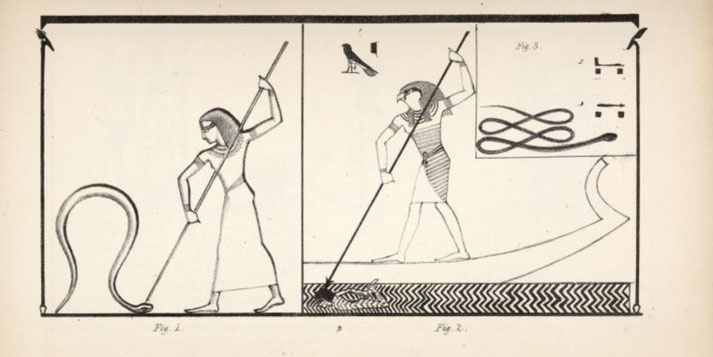Apophis: every ancient Egyptian's greatest fear after death

In ancient Egypt, people feared a mythical creature called Apophis because they believed it was a huge serpent that threatened to upset the balance of the universe.
From the earliest days of Egyptian mythology to the height of Egyptian civilisation, Apophis, powerful enough to force the gods to work together to keep him away, was a figure of horror and awe.
But what was Apophis and why did the Egyptians fear him so much?
What was Apophis?
In ancient Egyptian stories, Apophis, who was also called Apep, was an evil god or demon often shown as a giant snake.
He was seen as chaos, destruction, and deep darkness and was thought to be the main enemy of the gods and the pharaoh.
Apophis wanted to destroy the order of the universe and plunge the world into eternal darkness by eating the sun god Ra.
Ra, one of the strongest gods in ancient Egypt, clashed with Apophis in battles seen as vital to keeping Ma’at, the balance of the universe.
Because of his destructive plans, Apophis played an important role in Egyptian religious ideas and ceremonies.
How do we know about Apophis?
The mysterious figure of Apophis appears in many ancient Egyptian writings. The oldest references appear in the Pyramid Texts from the Old Kingdom period (around 2400 BCE), where he is shown as a serpent threatening Ra’s sun boat as it travelled across the sky and through the underworld.
Apophis is also named in several spells of the Coffin Texts, a set of funerary spells written on the coffins of important people during the Middle Kingdom period (around 2055 to 1650 BCE).
He also appears in the Book of the Dead, another set of funerary spells and instructions from the later New Kingdom period (around 1550 to 1069 BCE).
That text shows Apophis as a powerful enemy of the person who has died. The deceased had to defeat Apophis during the soul’s journey to the afterlife to reach the Field of Reeds safely.
Why was he so feared?
According to Egyptian beliefs, after death, the soul of a person would start a dangerous journey through the underworld and along the way would face many trials.
The most important obstacle was Apophis himself.
In many stories, this creature lay hidden in the underworld ready to attack and eat the soul.
Often, Apophis waited for Ra because people thought that if Apophis ever beat Ra, it would bring about the end of all things on earth and plunge them into endless darkness.
Apophis was said to be almost impossible to defeat, which made him more feared and respected.
How could Apophis be defeated?
To protect the soul from Apophis, the ancient Egyptians created many funerary spells and rituals.
For example, in the Book of the Dead, spells taught the dead how to find and defeat Apophis and how to guard against his evil powers.
These spells often included using protective charms, reciting words of power, and making special hand movements.
The great battle in the Book of Gates
Also, the great battle in the Book of Gates describes how the gods helped Ra in his ongoing fight against Apophis and protected the universe from darkness by forming a shield around Ra’s boat to keep him safe from Apophis’ attacks.
They then used their magical powers to defeat Apophis by shooting magical arrows at the serpent and using spells to send him away from the realm of the gods.
The Book of Gates also shows the role of the dead person in this fight, where the soul of the dead is seen as a helper of the gods by defending Ra’s boat.
In the end, the text suggests that the dead can earn their place among the gods by helping to defeat Apophis and keeping the balance of the universe.
This detailed story shows the victory of order over chaos and is just one example of the many ceremonies and ideas the ancient Egyptians used to protect themselves from the evil forces that they firmly believed threatened their world.

What do you need help with?
Download ready-to-use digital learning resources
Copyright © History Skills 2014-2025.
Contact via email
With the exception of links to external sites, some historical sources and extracts from specific publications, all content on this website is copyrighted by History Skills. This content may not be copied, republished or redistributed without written permission from the website creator. Please use the Contact page to obtain relevant permission.





